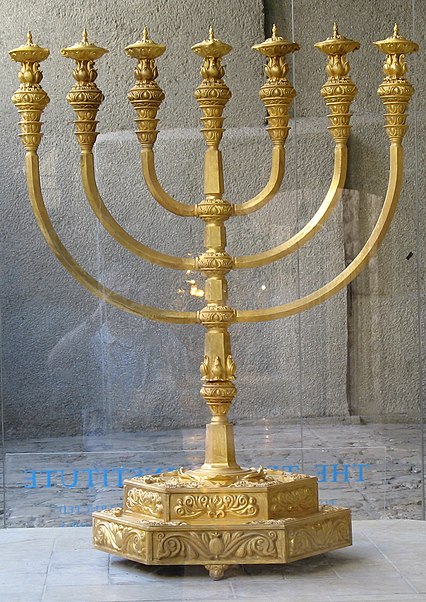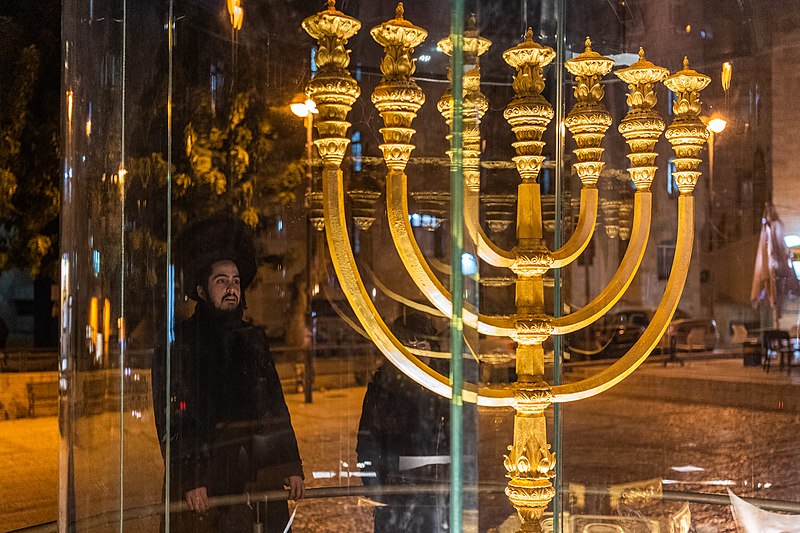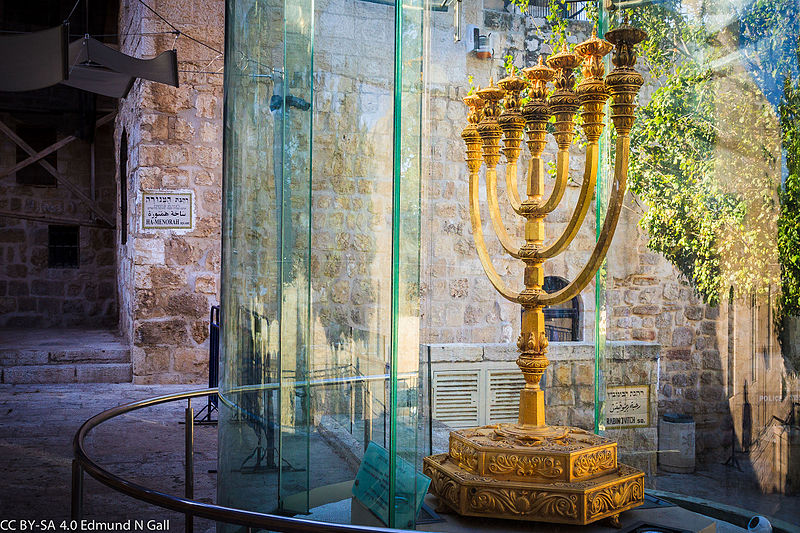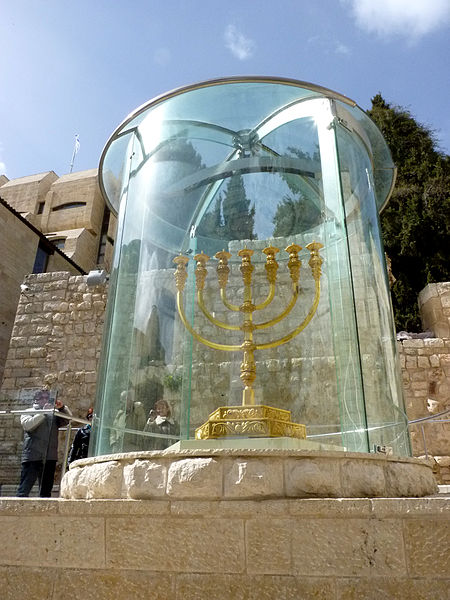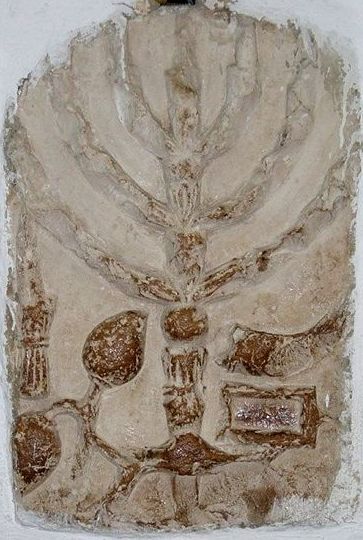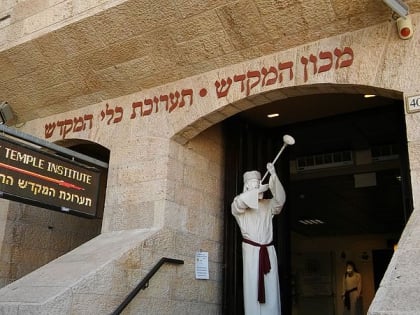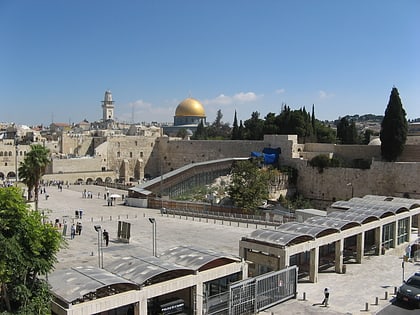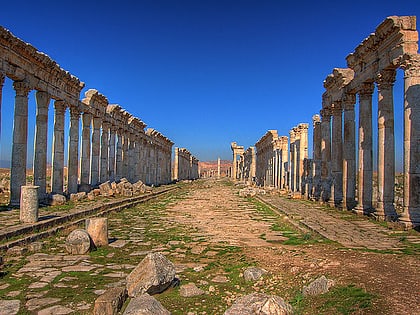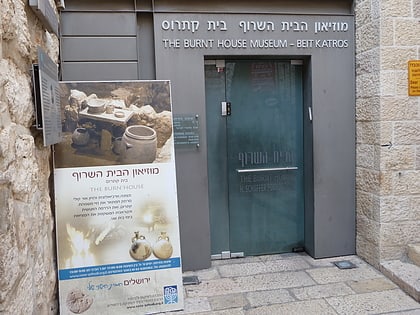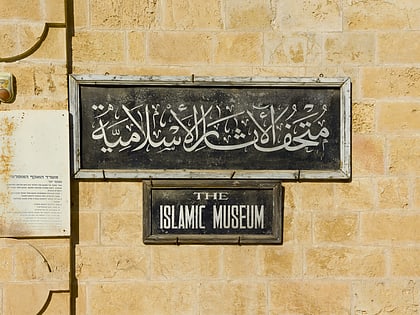Menorah, Jerusalem
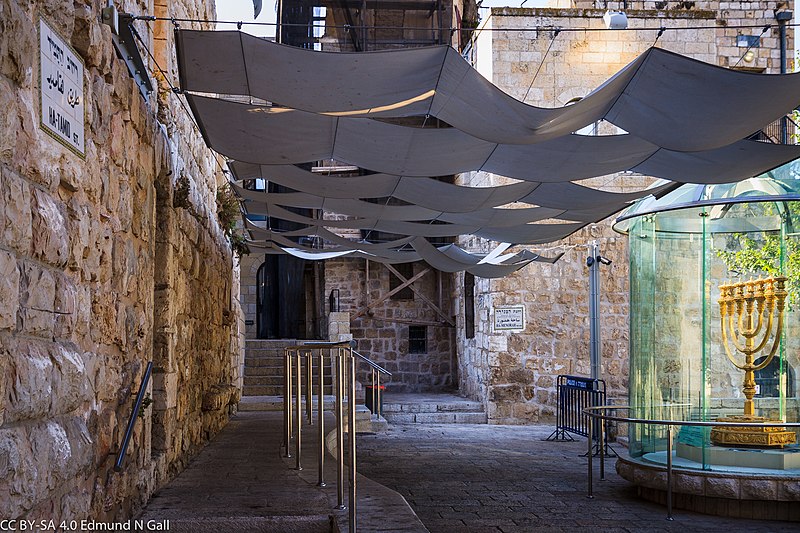
Facts and practical information
In the heart of Jerusalem, the Menorah stands as a testament to the rich religious history and cultural heritage of the city. This ancient seven-branched candelabrum, deeply rooted in Jewish tradition, is a symbol of the Temple that once graced the city's skyline.
The Menorah is traditionally associated with the Second Temple of Jerusalem, a sacred site of Jewish worship which was destroyed in 70 CE by the Romans. The original Menorah, crafted from pure gold, was one of the Temple's most revered objects, and its image has become an emblem of Judaism and an integral part of Israel's national symbol.
Today, a full-size replica of the Menorah stands prominently outside the Knesset, Israel's parliament, reminding visitors and citizens alike of the country's ancestral connections. This modern recreation, made of bronze and covered in gold, was created by Jewish sculptors and serves as a powerful symbol of resilience and continuity for the Jewish people.
The Menorah's location in Jerusalem is highly significant, as the city is not only the spiritual center for Jews but also holds religious importance for Christians and Muslims. The Temple area, known as the Temple Mount, is a focal point of pilgrimage and reverence, though the original Menorah no longer exists on the site.
הרובע היהודי (hrwb hyhwdy)Jerusalem
Menorah – popular in the area (distance from the attraction)
Nearby attractions include: Western Wall, Al-Aqsa Mosque, Western Wall Tunnel, Hurva Synagogue.
Frequently Asked Questions (FAQ)
Which popular attractions are close to Menorah?
How to get to Menorah by public transport?
Bus
- Hativat Yerushalayim/Yitshak Kariv • Lines: 231 (10 min walk)
- Jaffa Gate (11 min walk)


